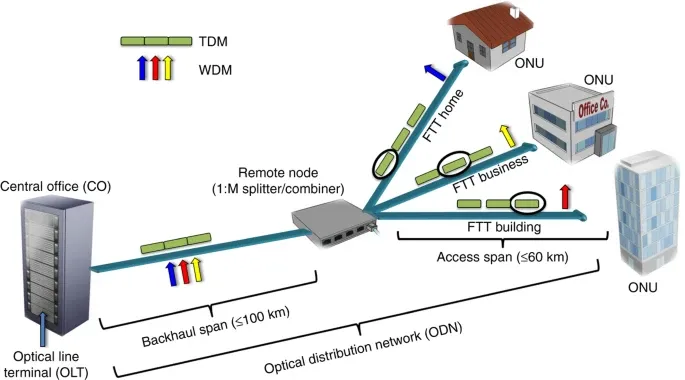The Ultimate Overview to Fiber Optic Protection Equipments for Your Business
In an age where security problems are vital for companies, understanding the details of fiber optic innovation can be transformative. This guide outlines just how integrating fiber optic security systems not just enhances information protection yet also supplies benefits like resistance to disturbance and real-time tracking capabilities.
Comprehending Fiber Optic Technology

The core of a fiber optic cable consists of a slim glass or plastic facility, surrounded by a cladding layer that shows light back right into the core. Single-mode fibers are designed for long-distance transmission, while multi-mode fibers are appropriate for shorter distances, usually used within buildings.
Optical fiber are not just faster however additionally extra protected than traditional electrical wiring. Their integral resistance to electromagnetic interference and the problem of using the signal without discovery make them a preferred choice for services prioritizing information honesty and safety and security. As companies significantly count on secure and efficient communication systems, comprehending fiber optic innovation becomes necessary for informed decision-making.
Secret Benefits of Fiber Optic Safety
When thinking about safety alternatives for an organization, the benefits of fiber optic systems are particularly compelling. Primarily, fiber optic innovation provides extraordinary data transmission speeds and bandwidth capacity, making it perfect for handling high-resolution video feeds from monitoring video cameras. This capability ensures that security employees get real-time data, boosting total reaction times to prospective safety and security risks.
Moreover, fiber optic wires are inherently resistant to electro-magnetic interference, which can endanger the stability of conventional copper-based systems. This resistance guarantees that the data transferred remains safe and secure and undisturbed, offering an extra reputable safety and security framework. Furthermore, fiber optics are much less vulnerable to physical damages, as they are made from glass rather than steel, decreasing upkeep costs and downtime.
An additional considerable advantage is the raised scalability of fiber optic systems. As service demands develop, fiber networks can be conveniently broadened to suit additional safety devices without significant overhauls to the existing facilities. Finally, fiber optic systems use enhanced cybersecurity functions, consisting of encryption abilities that shield sensitive data from unapproved accessibility. Jointly, my sources these advantages make fiber optic security systems a robust option for organizations looking for to enhance their safety and security procedures.
Installation Process and Considerations
Thinking about the intricacies entailed, the installment procedure of fiber optic protection systems calls for mindful preparation and implementation. The preliminary action includes a detailed website analysis to determine ideal places for cabling and equipment. This assessment should consider ecological variables, existing infrastructure, and potential vulnerabilities.

Furthermore, the installation must comply with neighborhood building ordinance and market requirements. This may consist of collaborating with different stakeholders such as building supervisors, IT teams, and security personnel to ensure seamless assimilation with existing systems.
Post-installation, strenuous testing is necessary to validate system efficiency and identify any kind of concerns that might arise. By focusing on these factors to consider during the installment process, businesses can make certain a durable and effective fiber optic security system visit homepage that fulfills their certain safety and security demands.
Most Current Developments in Fiber Optic Protection
Current advancements in fiber optic modern technology have dramatically enhanced the capacities of security systems for companies. One of one of the most remarkable innovations is the combination of fiber optic sensors that can detect vibrations and breaches along the perimeter of a center. These sensors offer real-time surveillance, allowing quick reaction to prospective breaches.
Additionally, the advancement of dispersed fiber optic picking up innovation enables the continuous tracking of huge locations with a single fiber cord. This technique not just reduces setup expenses yet also improves the dependability of keeping track of systems by getting rid of the demand for numerous, separate sensors.
Moreover, innovations in multiplexing techniques have allowed services to send substantial quantities of data over fiber optic networks, enhancing the capabilities of video monitoring systems. High-def video clip feeds can currently be sent out over lengthy ranges without loss of top quality, making certain that security personnel have access to clear and workable information.
Lastly, using expert system (AI) in combination with fiber optic systems is reinventing hazard discovery. AI formulas can examine information from fiber optic networks to determine uncommon patterns or behaviors, enabling proactive security actions. These technologies jointly stand for a substantial leap forward in fiber optic safety and security modern technology.
Selecting the Right System for Your Service
Selecting the proper fiber optic safety system for your organization is important for making certain optimum protection and satisfaction. To make an informed option, assess your certain security requirements, taking into consideration aspects such as the size of your premises, the nature of your procedures, and possible vulnerabilities.
Begin by evaluating the degree of safety and security needed; for circumstances, high-risk atmospheres may necessitate sophisticated systems with incorporated monitoring and breach detection abilities. Next, consider scalability; as your service expands, your protection system should can broadening to accommodate raised needs without substantial overhauls.
Furthermore, explore the integrity and efficiency of numerous systems. Look for suppliers with well-known track records and client reviews that testify to their solution high quality. It's additionally advisable to make inquiries regarding the technology's compatibility with existing infrastructure, ensuring a smooth combination procedure.
Conclusion
In final thought, fiber optic security systems offer a durable option for improving organization safety frameworks. The latest technologies better reinforce the effectiveness of these systems, making certain that organizations stay safe and adaptable in an ever-evolving threat landscape.